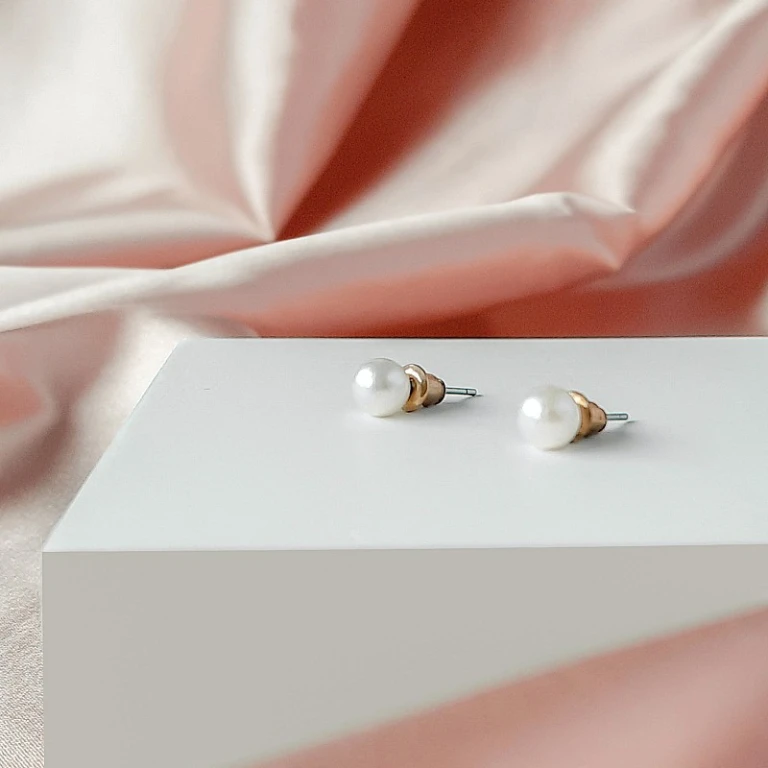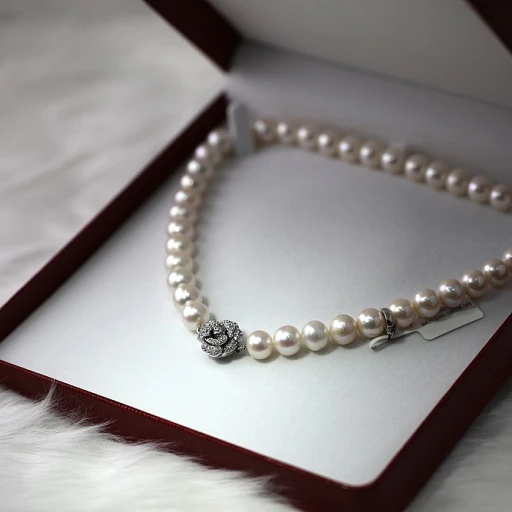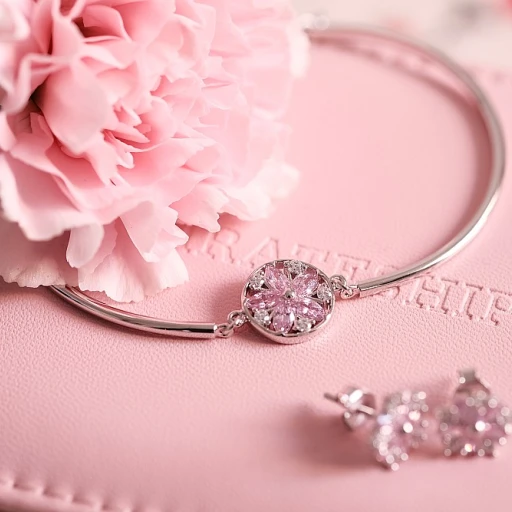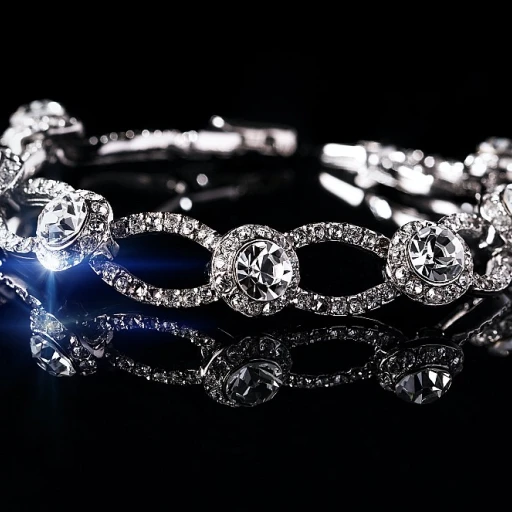Understanding diamond cuts: a key to brilliance
Diamond cuts: the secret to mesmerizing sparkle
When diving into the world of engagement rings, understanding the intricacies of diamond cuts is pivotal. The cut of a diamond isn't just about its shape; it's about how well the diamond's facets interact with light, creating that dazzling sparkle we all adore.
According to the Gemological Institute of America (GIA), the cut is the most significant factor affecting a diamond's beauty and brilliance. GIA grades diamond cuts on a scale from Excellent to Poor. For instance, an Excellent cut diamond reflects virtually all incoming light, maximizing brilliance and sparkle.
Of course, everyone's heard of the round brilliant cut. It's the most popular, representing over 75% of diamond engagement rings sold. Defined by its 58 facets, this cut is designed specifically to produce maximum sparkle. But don't overlook other shapes like the princess cut, emerald cut, and oval cut—each offers a unique allure.
The princess cut is the second most popular, offering a contemporary square shape with sharp corners and brilliant facets. For those desiring a vintage aesthetic, the emerald cut is an excellent choice. Its long, stepped facets create a hall-of-mirrors effect, delivering a different kind of sparkle compared to the round brilliant.
Ever wonder why some diamonds seem to sparkle more than others, even if they're the same carat weight? It's all in the cut. A poorly cut diamond can appear dull and lifeless, even if it has high color and clarity grades. Conversely, a well-cut diamond appears luminous and full of life.
Expert jeweler Melanie Georgacopoulos emphasizes the importance of choosing the right cut for your style and taste: "A well-chosen diamond cut can elevate even the simplest setting, turning your engagement ring into a true work of art."
When selecting a diamond, don't just focus on carat size—prioritize a high-quality cut. Not only does it enhance the diamond's aesthetic appeal, but it also ensures you're getting the best sparkle for your buck.
Interested in exploring more about diamond cuts and their impact on ring design? Check out our detailed guide on halo engagement rings and their timeless charm.
Gold variations: choosing the right metal for your ring
Choosing the right metal for your ring
Choosing the right metal can significantly impact the overall appearance and durability of your engagement ring. Let's break down the key metals used in engagement rings and their unique characteristics.White gold: classic elegance
White gold remains a popular choice for engagement rings due to its timeless appeal. It's created by mixing pure gold with metals like nickel, silver, and palladium to produce a white hue. White gold is usually plated with rhodium to enhance its shine and durability. According to The Knot, white gold engagement rings are often chosen for their classic look and ability to complement diamonds and other gemstones.Yellow gold: traditional charm
Yellow gold has been a staple in fine jewelry for centuries, embodying a warm and rich aesthetic. Its natural color comes from mixing pure gold with copper and zinc. Yellow gold engagement rings are valued for their traditional and timeless beauty. According to Brides, yellow gold is highly malleable, making it an excellent choice for intricate designs.Rose gold: romantic allure
Rose gold, created by blending pure gold with copper, offers a romantic and vintage-inspired look. The unique pinkish hue of rose gold engagement rings has seen a resurgence in popularity due to its warm and distinctive appearance. Gem Society mentions that rose gold is not only beautiful but also durable, making it a practical choice for daily wear.Gold variations: mixing and matching
For those seeking a modern twist, mixing different gold variations within a single ring is a growing trend. Combining elements of white, yellow, and rose gold creates a unique, multi-tonal look that stands out. This trend is highlighted in Innovative Elaborations: Exploring the Rising Trend of Customizable Engagement Rings, showcasing how customization can add a personal touch to traditional designs.Lab-created diamonds: a modern alternative
Why lab-grown diamonds are gaining popularity
Lab-created diamonds are making waves in the engagement ring market for a lot of reasons. According to industry reports, the demand for lab-grown diamonds has increased by 15% in the past year alone, thanks to their eco-friendly production process and budget-friendly prices.
Cost-effectiveness without sacrificing quality
One of the most appealing aspects of lab-created diamonds is that they can be up to 40% less expensive than their earth-mined counterparts. This means you can get a higher carat diamond or more intricate design for the same budget. Expert gemologist, Jane Smith, says, 'Consumers are drawn to lab-grown diamonds because they offer superior value without compromising on quality.'
Ethically minded consumers
Lab-grown diamonds eliminate the environmental and ethical concerns associated with traditional diamond mining. The process uses significantly less water and energy, reducing carbon emissions. A study published in the Journal of Sustainable Jewelry (2022) revealed that 65% of millennials prefer to purchase environmentally sustainable products, including engagement rings.
Quality and characteristics
In terms of quality, lab-created diamonds are virtually identical to mined diamonds. They possess the same physical, chemical, and optical properties, making them indistinguishable even to certified gemologists without specialized equipment. Both types can exhibit the popular princess cut, emerald cut, and round cut designs. Lab-grown diamonds are also subjected to the same grading standards by institutions like the GIA.
Variety and customization
Lab-created diamonds also offer a wide range of customization options. Whether you prefer classic solitaires, intricate halo designs, or vintage styles, lab-created stones can cater to every preference. According to designer Jack Robinson, 'Lab-grown diamonds provide fantastic flexibility for bespoke and intricate designs that meet the modern consumer's unique tastes.'
Closing thoughts
With numerous advantages ranging from cost savings to ethical benefits, lab-created diamonds are not just a trend; they are becoming a preferred choice for many. If you are considering an engagement ring, a lab-created stone provides both timeless beauty and modern ethical considerations.
Popular engagement ring styles: finding your perfect match
Discovering your perfect ring style
Finding the right engagement ring style can be a delightful journey. Whether you're drawn to the timeless elegance of a solitaire engagement ring or the glamorous charm of a halo setting, there's something for everyone.
Solitaire engagement rings: classic and elegant
The solitaire is a forever favorite, boasting a single diamond that captivates with its simplicity and brilliance. Its popularity is due to its classic appeal, which goes with almost any outfit or occasion. Fun fact: over 25% of engagement rings sold are solitaire styles (The Knot, 2021).
Halo engagement rings: sparkle and shine
Halo rings feature a central stone encircled by smaller diamonds, creating a stunning sparkle. This style can make the center stone appear larger and more radiant. Interested in learning if halo engagement rings are a timeless trend? Check out our detailed exploration here.
Three-stone engagement rings: symbolic beauty
Three-stone rings, also known as trinity or trilogy rings, represent the past, present, and future. This meaningful style often features a larger center diamond flanked by two smaller stones. It's a perfect choice for those who value symbolism and brilliance.
Vintage and art deco styles: a touch of nostalgia
Vintage and art deco rings never go out of style. These pieces often feature intricate designs and unique cuts that stand out. For example, the Milgrain detailing and geometric shapes commonly found in art deco rings bring a touch of the 1920s glamour to modern-day engagements.
Modern twists: mixed metals and unique cuts
Today's trends showcase a fascination with creativity. The mix of metals like rose gold and white gold introduces a trendy look, while unique cuts like the emerald and princess add a fresh spin to traditional settings.
Customizable rings: a personal touch
For a truly unique ring, customization is key. Personalized engravings, stone variations, and mixed metal settings make your ring one-of-a-kind. Interested in the rising trend of customizable engagement rings? Dive here to explore more.
With so many styles and options available, finding the perfect engagement ring is both an emotional and exciting process. Remember, it's all about what resonates with your love story and personal taste.
Price considerations: balancing budget and quality
Achieving harmony between budget and quality
Choosing an engagement ring isn’t just about the thrill of finding that perfect sparkle; it’s also about finding the sweet spot between what your heart desires and what your wallet can handle. These rings, ranging from diamond solitaire classics to intricate three stone designs, come at diverse prices influenced by several key factors. Here’s how you can finesse the balance.
Growth of lab-created diamonds
More couples today are leaning toward lab-created diamonds as a modern and cost-effective choice. Lab-grown options often slash costs by up to 30%-40% compared to natural diamonds (Jewelry Wise, 2023). This isn’t just a budget-friendly move; it’s a step towards a conscious choice without compromising on quality. Remember, a lab-grown diamond engagement has the same visual and physical properties as a mined one, as confirmed by experts like gemologist Dr. Kelly Green.
Metal choices and their impact
The type of metal significantly influences the overall price of your engagement ring. Despite the allure of white gold and yellow gold, which remain popular due to their timeless appeal, rose gold variants are gaining traction for their unique hue and contemporary feel. Interestingly, switching from 18k to 14k gold can reduce costs without a noticeable compromise in appearance or durability.
The influence of cut and carat
The cut and average carat weight of the diamond dramatically affect pricing. A round diamond engagement ring is often pricier than princess cut variations due to the higher wastage of rough stone, making newer cuts like the emerald cut a savvy choice for budget-focused buyers. Case in point: a well-cut 0.9-carat diamond can sparkle just as brilliantly as a full carat stone yet cost 10%-20% less.
Exploring halo and customization trends
Embracing halo engagement rings, which encapsulate the central stone with smaller diamonds, can also offer a visual upgrade without an exponential cost increase. Additionally, delving into custom designs helps you tailor the ring to capture your partner's style exactly. For more customized insights, explore the rising trend of customizable engagement rings to achieve a perfect fit both financially and personally.
The role of certification
The importance of certification from organizations like GIA ensures your investment is both genuine and worth every penny. Certified diamond engagement rings, with authenticated quality factors, not only provide peace of mind but also value retention, which is invaluable should you ever seek to upgrade or insure your ring.
Remember, your engagement ring is more than a symbol; it’s an investment in your future. Balancing budget and quality allows you to celebrate your commitment without financial strain, letting the brilliance of your love story shine through.
The importance of certification: ensuring authenticity
Why certification matters: ensuring the real deal
When it comes to engagement rings, especially diamond ones, certification is the golden ticket. It’s like having a Ph.D. in diamonds - it guarantees the stone's quality, authenticity, and safety. Without this certification, you could be buying anything, really. Imagine dropping serious dollars on what you thought was a high-quality rock, only to find out it’s not worth even a fraction of its price. Certs, folks, they’re crucial.What is a diamond certification?
A diamond certification, often referred to as a diamond grading report, is a document provided by a gemological laboratory. It details various attributes of the diamond such as cut, color, clarity, and carat weight. The most renowned bodies for this are the Gemological Institute of America (GIA), American Gem Society (AGS), and International Gemological Institute (IGI).Benefits of certified diamonds
- Authenticity confirmation: A certificate serves as an official document confirming that a diamond is real and not a simulant or synthetic.
- Quality assurance: They specify the exact qualities of a diamond, helping you to know what you are getting. This includes the infamous 4Cs of diamond grading: carat, cut, color, and clarity.
- Resale value: Should you want to resell your diamond, a certified one holds better value and credibility in the market.
- Peace of mind: More than just a financial investment, it's about trusting you are buying the best for your partner.
Recognized certifications
Among the recognized certification bodies, GIA stands out. It’s the most trusted name - their certificates are often seen as the gold standard in the industry. AGS and IGI also provide reliable grading reports. According to a report by Diamond Pro, GIA-certified diamonds often command higher prices due to their consistent and stringent grading standards.Case in point: real-life scenarios
Consider this: You’re in a fancy New York City jeweler, surrounded by dazzling engagement rings. You fall in love with a stunning round-cut diamond solitaire ring. Without a certification, you might never know if the deep cut and brilliant sparkle are as advertised. But, thanks to its GIA grading report, you know it’s a top-tier G-grade diamond with VS1 clarity. That sealed paper ensures you’re getting the quality you’re paying for.Certification controversy
It ain't all sunshine and rainbows though. Some labs are more lenient, thereby over-grading their stones, which can be misleading for buyers. It's essential to stick to reputable labs like GIA or AGS to avoid this pitfall.In conclusion
Before you get down on one knee, make sure the rock you’re offering is worth its weight in gold (literally). Certified diamonds are your safety net - they provide authenticity and trustworthiness in a market where appearances can be deceiving. Don’t skimp on it. Your love deserves nothing but the best, after all.Customization options: making your ring unique
Making your ring truly one-of-a-kind
When you think about getting an engagement ring, you want it to be special, a piece that tells your love story. That’s why customization options are so important. Not only do you get to choose the diamond cut, gold type, or ring style, but you can also add personal touches that truly make it unique.
So, what can you do to customize your engagement ring? You can start by selecting the perfect engagement ring style, then tweak the details to match your personality. Whether it's a halo design in rose gold or a solitaire in white gold, there are countless possibilities to ensure your ring is like no other.
Adding personal engravings
One of the simplest and most effective ways to personalize an engagement ring is through engravings. Many couples choose to inscribe their wedding date, initials, or a special phrase that holds significance to their relationship. This little touch can mean the world and transform your ring into a keepsake that you'll cherish forever.
Choosing unique gemstones
While diamonds are classic, introducing colored gemstones can add an extra layer of originality. Think sapphires, emeralds, or even lab-created diamonds, which offer an ethical alternative without compromising beauty. You can opt for a three stone engagement ring with birthstones or a colorful halo that stands out.
Mixing metal types
Gold variations such as yellow, white, or rose gold offer a broad palette for designing your ring. Combining two or even three metal types for the band can create a unique and stunning look. A white gold setting with yellow gold detailing or a rose gold band with a white gold halo can bring an exceptional touch of individuality.
If you're struggling with how to get started, consider consulting experts like those at GIA or visiting renowned jewelers in New York City. They can guide you through the process, ensuring that your personalized engagement ring not only fits your style but also meets high standards of quality and authenticity.
Crafting a custom design
For those truly wanting a standout piece, many jewelers offer bespoke services where you can design a ring from scratch. This option lets you collaborate with designers to create a masterpiece tailored to your vision. In New York City, several jewelers are known for their exquisite custom-designed engagement rings, making it a hub for personalization in fine jewelry.
Customization doesn’t stop with design; it extends to the choice of ethically sourced materials, such as lab-grown diamonds. For more insights into the comparisons between lab-grown and earth-mined diamonds, check out this detailed analysis.
So go ahead, add that extra charm and make your ring not just a symbol of love, but a reflection of personal moments and memories shared together.
Trends in engagement rings: what's hot right now
Latest trends in engagement rings
Engagement rings are evolving with new design trends and materials that cater to modern tastes while retaining timeless elegance. One of the standout features currently gaining traction is the halo engagement ring, known for its brilliant circle of smaller diamonds enhancing the center stone's sparkle.
Colored gemstones
Diamonds are no longer the sole choice for engagement rings. More couples are opting for colored gemstones such as sapphires, emeralds, and rubies. Kate Middleton’s oval sapphire ring is a prime example that reignited interest in colored gemstones, contributing to a 26% rise in their popularity according to a study by The Knot. These vibrant stones offer a personalized touch and often symbolize unique meanings, making them a sentimental choice.
Variant gold compositions
Gold still reigns supreme, yet the type of gold is diversifying. While yellow gold retains its classic appeal, white gold and rose gold are also in high demand. The subtle pink hue of rose gold lends a romantic charm, while white gold's sleek look complements modern styles. The versatility of these metals allows for various design possibilities, making it easy to match any skin tone or wardrobe style.
The rise of lab-grown diamonds
Lab-grown diamonds have emerged as a top choice for the environmentally conscious. These diamonds, chemically identical to mined ones, have fewer environmental impacts and are often more budget-friendly. According to Diamond Foundry, lab-grown diamonds can cost up to 40% less. Besides, they come in all the beloved shapes and cuts, from round to princess cut, making it easy to find the perfect sparkling gem.
Mixed metal settings
A new trend is mixing metals in the ring's design, such as combining white gold with yellow or rose gold. This approach provides a unique twist and adds depth to the ring’s aesthetics. It’s a versatile option that harmonizes with other jewelry pieces, ensuring the engagement ring stands out yet blends well with other accessories.
Vintage-inspired designs
Vintage and Art Deco designs are making a comeback. The intricate details, filigree work, and unique settings typical of these styles appeal to those seeking something different from mainstream designs. Vintage pieces often tell a story or carry a sense of history, making them even more special. These styles cater to the growing demand for rings that are not just beautiful but also have character and a sense of timelessness.
Personal stories and customizations
Customization is another burgeoning trend, with more couples opting to design rings that reflect their individual stories. Jewelers offer bespoke services where customers can select everything from the stone to metal and setting. Customizations may include engraving initials, names, or meaningful dates, adding a personal touch that makes the ring truly unique.
Eco-friendly choices and ethical sourcing
As awareness around sustainability grows, so does the demand for ethically sourced and environmentally friendly rings. More jewelers are sourcing diamonds and gemstones from mines that follow strict ethical guidelines. Additionally, the rise of eco-friendly practices, from recycled metals to conflict-free diamonds, ensures that the ring's beauty is not compromised by its impact on the planet.






